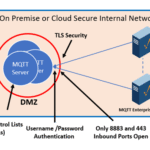Actually, if you’d told the 2018 version of me — the one dragging through endless spreadsheets at a marketing agency, stress-snacking and doubting every life choice — that I’d one day be debugging neural interfaces and training brain-computer interaction models, I’d have laughed and then maybe cried. Because, back then, I didn’t even know what neurotech was.
Fast forward to 2025. I’m not just in neurotech — I live it. And trust me, getting here wasn’t some perfect roadmap. It was messy, awkward, thrilling, and frustrating.
So here’s my take on how you (yes, even if you’re deep in something unrelated like retail, finance, or front-end design) can make the leap, too.
First, What Even Is Neurotech?

Let’s get something straight: neurotechnology isn’t all sci-fi implants and Elon Musk memes. Sure, there’s the flashy stuff — Neuralink, BCIs (brain-computer interfaces), and brain-controlled prosthetics — but there’s also neurofeedback apps, attention trackers, cognitive load monitors, and even neurogaming.
The field is wide. And it’s growing faster than most people realize.
I got my first taste of it at a tech expo in 2022. I demoed a focus-training headset using EEG waves, and boom — I was hooked. I wasn’t even sure what EEG meant at the time, but I knew I wanted in.
Career shifts into neurotech are not glamorous
I won’t sugarcoat this: transitioning into neurotech was rough.
I didn’t have a neuroscience background. Hell, I barely passed biology in school. I was a decent coder (mainly JS and Python), but my imposter syndrome was in overdrive. I kept thinking, “Who am I to even touch something as complex as the human brain?”
But here’s what I realized: neurotech needs people from all walks of life.
Hardware engineers, cloud architects, UI/UX folks, data analysts, ethics consultants — even artists. The brain is the most human thing we have. And the field trying to connect it to machines? Well, it needs humans to build it — not just lab coats.
So if you’re wondering, “Can I even do this?” — yeah, you probably can. You just need to find your angle.
What Skills Helped Me in Neurotech (And Could Help You)
Alright, let’s get into the nitty gritty. Here’s what actually moved the needle for me:
- Python: If you’re coming from web dev, good news — your scripting skills transfer. Python is huge in neurotech for signal processing, data analysis, and even prototyping experiments.
- Basic Neuroscience: I didn’t go back to school, but I took online courses. Coursera’s “Fundamentals of Neuroscience” by Harvard? Gold. You don’t need to be a brain surgeon. Just enough to understand what you’re working with.
- Signal Processing: This one was new to me. Learning how to clean, filter, and interpret EEG/EMG data took time, but it’s central to neurotech.
- Ethics & Privacy: Neurodata is personal. Like, the most personal. Learning how to treat it with care — and understanding the implications — is critical.
- Soft Skills: Weirdly enough, communication helped me land my first gig. The ability to explain complex stuff in plain language made me stand out during interviews.
I also built a small project — a mood visualization app using open EEG data and basic sentiment models. It was buggy. It crashed often. But it showed I cared enough to try. That mattered.
Certifications & Courses That Actually Helped
I’m not big on certificates-for-show. But a few that actually boosted my confidence (and helped on my resume):
- Coursera – Fundamentals of Neuroscience (Harvard)
- Udemy – EEG Signal Processing for Beginners
- edX – Computational Neuroscience
- OpenBCI – BCI 101 (Community content, informal but hands-on and helpful)
Oh — and read papers. Not the heavy academic ones (at least not right away), but short ones on or Medium. They helped me understand where the field was heading.
Where the Jobs Actually Are
A lot of people think “neurotech” and assume it’s only happening in California. Nah. In 2025, I’m seeing startups pop up everywhere — Berlin, Tel Aviv, Bengaluru, even remote-first neuroUX consultancies.
Here are real roles I’ve seen:
- Neuroengineer (Hardware) – Designing electrodes, sensors, or headsets
- Data Scientist (Neurodata) – Analyzing EEG data, sleep cycles, attention spans
- NeuroUX Researcher – Optimizing interfaces for attention, emotion, cognitive load
- BCI App Developer – Working with platforms like Muse, Emotiv, or custom OpenBCI rigs
- Neuroethics Analyst – Shaping how data is collected, stored, and used
And yes, some of these require experience. But not all of them require a PhD. Some want curiosity, a portfolio, and just enough grit to solve weird problems.
Stuff No One Tells You
There were so many things I learned late. Here’s a mini brain dump (pun intended):
- Neurotech is interdisciplinary chaos. You’ll often be the only one in a meeting who understands both the code and the neural stuff. That’s your superpower.
- Be ready to fail. Hardware fails. Signals are noisy. Devices stop working mid-demo. Embrace the mess.
- Community is everything. Join Discords, follow researchers on Twitter, post your thoughts. I got my first freelance gig just by sharing my learnings on LinkedIn.
- This field is still so young. You’re not late. You’re early. That means your voice, your ethics, your vision — they matter.
Would I Do It Again?
Yes. A hundred times, yes.
Getting into neurotech gave me a weird sense of purpose. Like, for once I’m not just building things to make people click ads faster — I’m building stuff that feels important.
Stuff that could help someone with a disability.
Or improve mental health care.
Or even just help someone sleep better.
It’s not all roses. The tech is fragile. The job market is still figuring itself out. But if you’re willing to embrace the uncertainty, learn like crazy, and be okay with not having all the answers — neurotech might just change your life like it did mine.
Final Thought
If you’re standing at the edge, wondering whether to leap — do it.
Not because it’s easy, but because it’s worth it.
I did it. And I’m no genius.
I’m just a curious person who followed the brainwaves.
Read our more blogs-How to Secure IoT Devices with MQTT and TLS


